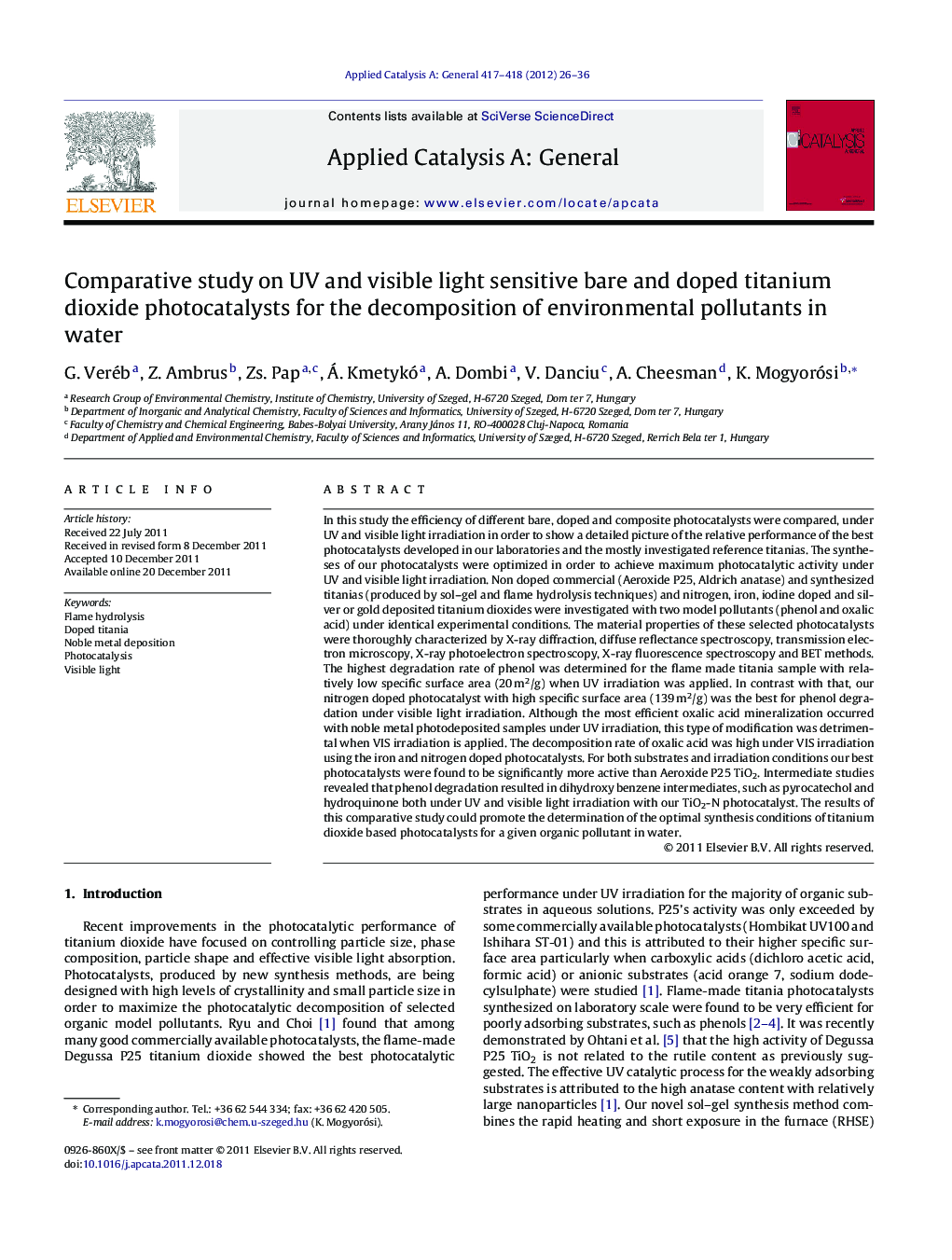| Article ID | Journal | Published Year | Pages | File Type |
|---|---|---|---|---|
| 41157 | Applied Catalysis A: General | 2012 | 11 Pages |
In this study the efficiency of different bare, doped and composite photocatalysts were compared, under UV and visible light irradiation in order to show a detailed picture of the relative performance of the best photocatalysts developed in our laboratories and the mostly investigated reference titanias. The syntheses of our photocatalysts were optimized in order to achieve maximum photocatalytic activity under UV and visible light irradiation. Non doped commercial (Aeroxide P25, Aldrich anatase) and synthesized titanias (produced by sol–gel and flame hydrolysis techniques) and nitrogen, iron, iodine doped and silver or gold deposited titanium dioxides were investigated with two model pollutants (phenol and oxalic acid) under identical experimental conditions. The material properties of these selected photocatalysts were thoroughly characterized by X-ray diffraction, diffuse reflectance spectroscopy, transmission electron microscopy, X-ray photoelectron spectroscopy, X-ray fluorescence spectroscopy and BET methods. The highest degradation rate of phenol was determined for the flame made titania sample with relatively low specific surface area (20 m2/g) when UV irradiation was applied. In contrast with that, our nitrogen doped photocatalyst with high specific surface area (139 m2/g) was the best for phenol degradation under visible light irradiation. Although the most efficient oxalic acid mineralization occurred with noble metal photodeposited samples under UV irradiation, this type of modification was detrimental when VIS irradiation is applied. The decomposition rate of oxalic acid was high under VIS irradiation using the iron and nitrogen doped photocatalysts. For both substrates and irradiation conditions our best photocatalysts were found to be significantly more active than Aeroxide P25 TiO2. Intermediate studies revealed that phenol degradation resulted in dihydroxy benzene intermediates, such as pyrocatechol and hydroquinone both under UV and visible light irradiation with our TiO2-N photocatalyst. The results of this comparative study could promote the determination of the optimal synthesis conditions of titanium dioxide based photocatalysts for a given organic pollutant in water.
Graphical abstractFigure optionsDownload full-size imageDownload high-quality image (169 K)Download as PowerPoint slideHighlights► I, N, Fe doped and Ag, Au deposited TiO2 were compared with reference titanias. ► Non-doped flame made titanias showed the best activity for UV/phenol decomposition. ► Ag, Au deposition enhanced significantly the oxalic acid degradation in UV light. ► Nitrogen doped titania owns the highest efficiency for phenol under visible light. ► The activity order for oxalic acid under VIS irradiation is TiO2-Fe ≫ TiO2-N ≈ P25.
